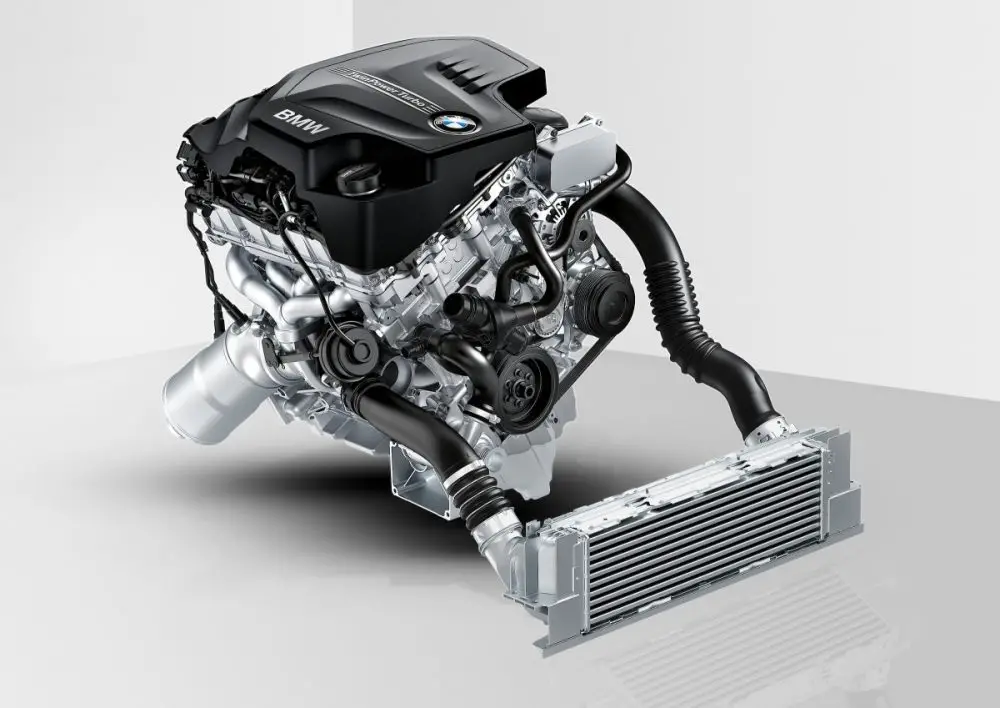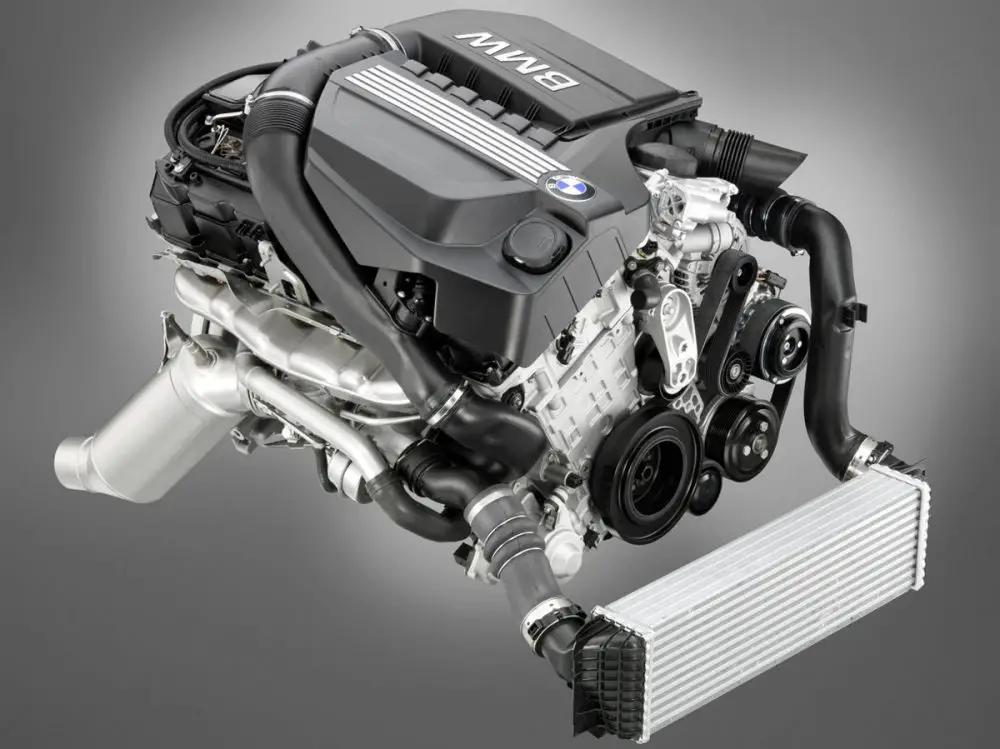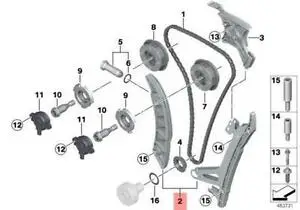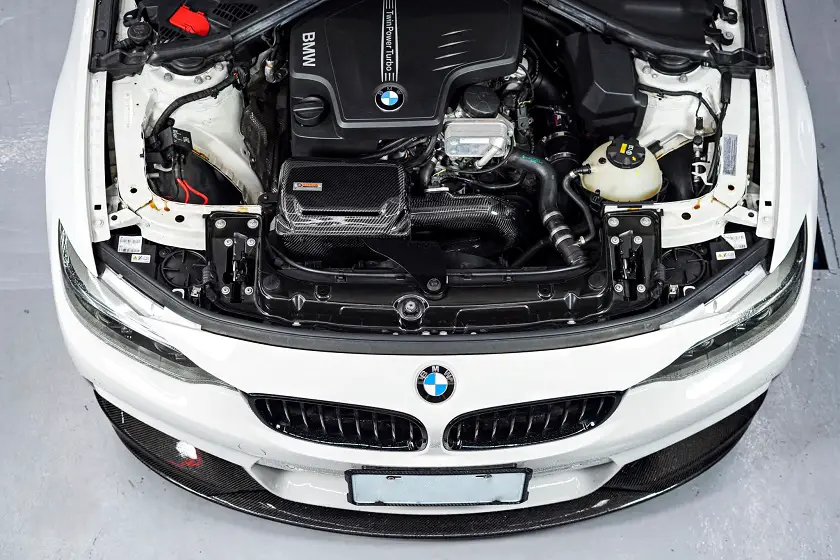BMW Downpipes
What are they and why do I need them?
Downpipes and your BMW
When you buy a turbocharged vehicle, you expect high performance capacity. One of the key components in providing this performance in the exhaust system, and in particular the downpipe. Let’s say you own a 2017 BMW 3 series with an N20 or N26 engine. The factory-added downpipe will be built to offer a pleasing level of efficiency of exhaust flow, but it’s still possible to do better. If you buy a high flow catted downpipe, or even a catless downpipe, you can boost both horsepower and torque. This is especially sought after by drivers who are going to engage in either racing or off-road activities, where extra hp and pound-feet of torque can mean the difference between victory and defeat.

What exactly is a downpipe?
As we mentioned, your BMW, whether it has an N20, N26 or N55 engine, will come with a downpipe already. On any turbocharged vehicle, the downpipe lies within your exhaust system, connecting the turbo exit to the catalytic converter. How easy it is for things to flow down this pipe has a huge impact on your car’s overall achievable horsepower and torque. A typical BMW downpipe will have two 400-cell catalytic converters within the downpipe, which are actively reducing your hp and level. Installing a new one can free up the space and allow more efficient flow.

What’s the difference between catted and catless downpipes?
The “cat” part of these terms doesn’t refer to the furry house pet, of course, but rather a catalytic converter. Since it’s the catalytic converter that’s chiefly responsible for the slowing down of your exhaust system, it is that which is they key to identifying the downpipe types.
Catted downpipes — these are downpipes which still contain their catalytic converters, but perhaps in a reduced capacity. Where your BMW standard downpipe may have two of these installed, a catted downpipe may only contain a single one.
Catless downpipes — these are pipes in which the catalytic converter elements has been removed completely, thus allowing the maximum efficiency, power and benefit to be enjoyed by the driver.

But do I really need one? Isn’t the factory one alright?
If you are happy with your car’s performance in its factory-build form, then that’s fine, but many want to open up the car’s potential and experience more. Apply a new high flow or catless downpipe to your BMW, and before any other action you can see an improvement of 20-25hp and 20-25lb-ft of torque. This doesn’t sound like much, but it is possible to improve that further if you include a tuning, like a BootMod3 tune, for example. More on that later.

Is it just more horsepower and torque? Are there other benefits?
First of all, we shouldn’t underestimate the value of extra horsepower and torque, especially if we are racing or planning any off-road activities. Having said that, when you couple the installation of the high flow or catless downpipe with a flash tune with BootMod3, you can see that increase go up to 80-100hp more. Now, that is a difference worth noting!
Besides power, you can also:
- Give your car a louder, more robust exhaust sound
- Get more power and control when off-roading or racing
- Enjoy greater thrill and excitement when driving your car
In short, switching to one of these downpipes is an excellent way to make your car a true “performer.”

What is BootMod3? What does it have to do with downpipes?
BootMod3 represents the cutting edge in car tuning technology; helping car mod enthusiasts to ensure that their car and their upgrades are in perfect sync and working together optimally. It works via an app, which when connected to your car’s computer can help you tune the car after new components, like catless downpipes, are installed into the machine. This software is the first of its kind, and is revolutionizing car tuning in the modern age.
Is there a downside?
It’s not fair to say a “downside,” but there are certainly things to think about before you go buying and/or installing new downpipes on your BMW.
Check #1 – Does your home state allow it? Some states have bans or restrictions on these products, especially catless downpipes. They may be restricted to racing and off-road activities only, so you need to check your local and state laws.
Check #2 – The possibility of exhaust odor. Catless downpipe users will notice a fairly rank odor from the exhaust when they stand at the back of the car after driving. It’s nothing to worry about, but users should be aware. You won’t experience any smell from the driver’s or passenger seats.
Check #3 – The “Check Engine” light might come on. Since this is a new part, and your car is built to work primarily with the factory-issued downpipe. Your car’s “Check Engine” light might flash up because it views your exhaust system as suddenly rather inefficient. This can be remedied with some tune-ups and minor alterations.
As long as you are aware of these things, then you can go ahead and enjoy the performance benefits of adding this type of downpipe to your BMW. Don’t forget to do a BootMod3 tune for optimized performance!

Popular Blogs
Don’t see the topic you’re looking for? We are still growing out knowledge base, let us know what you want to learn about!
Can BMW Charge at Tesla?
Can BMW Charge at Tesla? As of now, BMWs can't directly charge at Tesla Supercharger stations because Tesla uses a proprietary connector. However, with the right third-party adapter, BMW owners might be able to make it work, but it's always good to double-check...
Are BMW Motorcycles Reliable? A Comprehensive Dive into the World of BMW Bikes
Are BMW Motorcycles Reliable? BMW motorcycles are renowned for their top-notch engineering and build quality, making them a reliable choice for riders around the world. Whether you're hitting the open road or tackling rugged terrains, you can count on a BMW to be a...
Can BMW Take 87 Gas? Discover the Truth Behind the Octane Debate!
Can BMW Take 87 Gas? Certainly! While a BMW can technically run on 87 octane gas, it's not the optimal choice. BMW recommends using premium fuel for most of their models to ensure the best performance and longevity of the engine. So, while it might be tempting to...
Embrace the Future with the BMW Genius Program
You know, they often say that 'knowledge is power'. Well, that's never been truer than in the case of BMW's groundbreaking initiative - The BMW Genius Program. Tailor-made for every BMW enthusiast out there, this program sheds light on the latest technological...
A Comprehensive Dive into the BMW N63: A Blend of Power, Performance, and Precision
Hey there, gearheads! Welcome to a deep dive into the fascinating world of one of the most renowned engines out there: the BMW N63. We're about to embark on an exciting journey, exploring the good, the bad, and the powerful of this engineering marvel. Are you ready...
How BMW TPMS Works: A Comprehensive Guide
When it comes to innovation and performance, BMW never falls short. But how well do you know the intricacies of your vehicle, specifically the Tire Pressure Monitoring System (TPMS)? Let's take a journey to understand how BMW TPMS works. How BMW TPMS Works So,...
Can BMW Keys Be Reprogrammed? Your Comprehensive Guide
Ah, the wonders of technology! It's in everything these days, from the appliances in our homes to the phones in our hands. And of course, it's a big part of our beloved vehicles too, particularly in prestigious brands like BMW. One feature that often leaves car...
How BMW VANOS Works: A Comprehensive Guide to Variable Valve Timing
Introduction Welcome to our comprehensive guide on the fascinating topic of how BMW VANOS works. If you've ever wondered about the inner workings of your BMW engine and how it achieves optimal performance, you're in the right place. In this article, we'll take a...
How BMW Models Work – BMW Model Names Explained
BMW, or Bayerische Motoren Werke, a name synonymous with luxury, performance, and automotive engineering, often leaves many of us scratching our heads when it comes to deciphering their model naming conventions. Do you ever wonder what these series of letters and...
Will BMW Wheels Fit Mercedes? Exploring the Compatibility Between Two Iconic Brands
When it comes to automobiles, BMW and Mercedes-Benz are two of the most renowned and prestigious brands in the world. Both manufacturers have established themselves as leaders in the industry, producing vehicles that exude luxury, performance, and style. However,...
